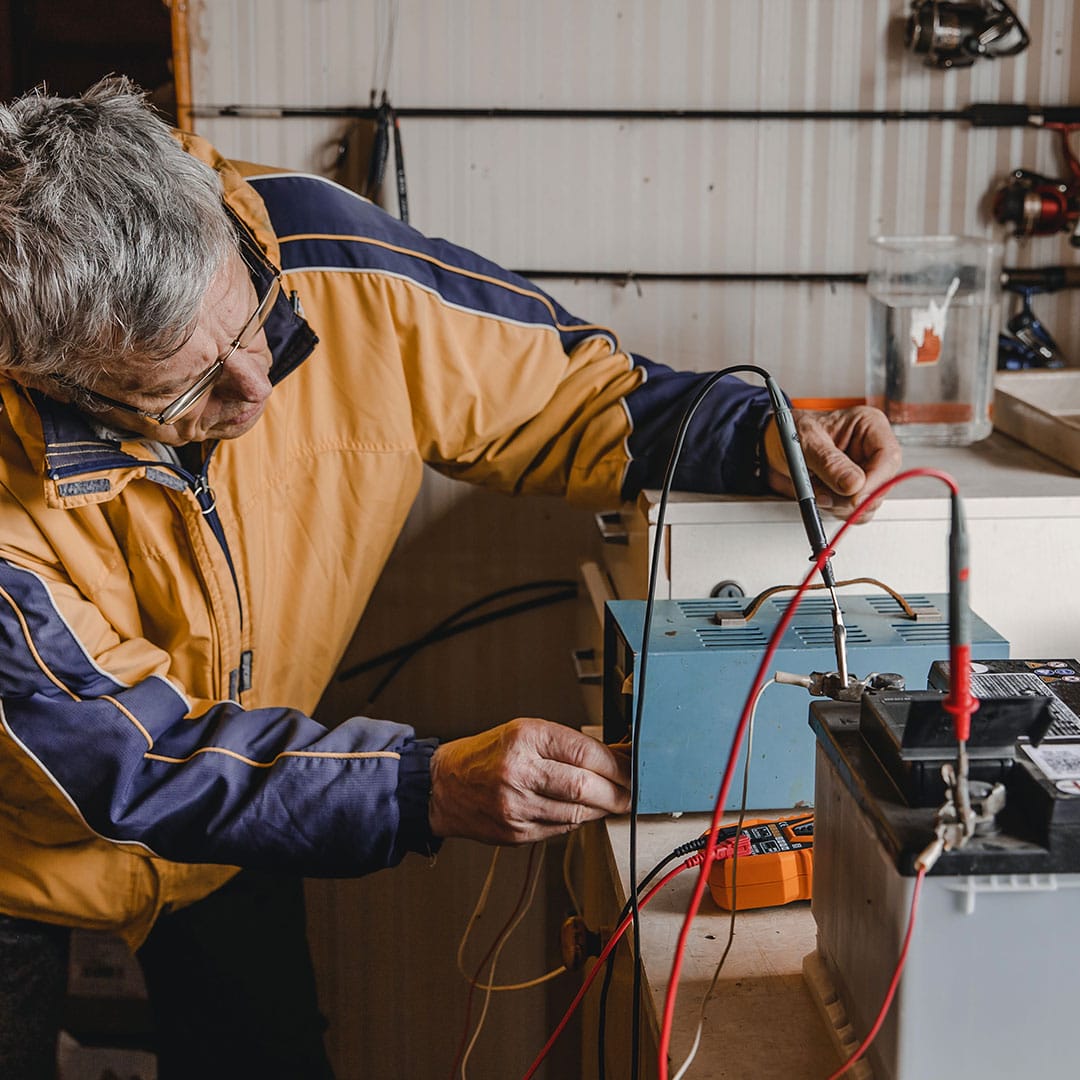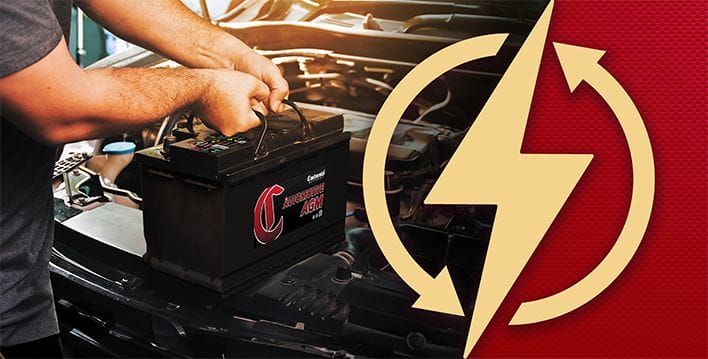
Picture it: You wake up in a rustic roadside inn and open the curtains to view the picturesque countryside. You’re hundreds of miles from home on an exciting week-long adventure, and today, you’ll be traveling to a nearby national park that’s at the top of your bucket list.
But when you go to fire up the car, it just won’t start. Did you leave the headlights on overnight? Did your battery just quit? No matter the issue, now you’ll need to find someone to help jumpstart the battery and track down an auto shop nearby to get a new battery rather than exploring the park.
With a little time spent on battery maintenance, your dream trip won’t become a nightmare. Here’s how to maintain an automotive battery and tell when it’s time for a replacement.
Automotive Battery Maintenance
Battery maintenance is an important part of being a responsible vehicle owner. Not only that, but a little effort here and there will save you money in the long run by helping your battery last as long as possible. To maintain a vehicle battery:
Clean the battery. You take your vehicle to the car wash, and you wipe down the dash and vacuum the interior seats from time to time. But did you know you should be putting in some elbow grease to clean the battery, too? The terminals can become corroded, which can shorten the lifespan of the battery.
To clean the terminals, start by disconnecting the negative terminal. Then, disconnect the positive terminal. Make a paste with equal parts water and baking soda, then scrub away any corrosion buildup around the terminals. Follow up by cleaning the area with a cloth, then coat the terminals with terminal spray to minimize the risk of future corrosion.
Charge the battery. Conventional flooded lead-acid batteries and absorbent glass mat (AGM) batteries recharge as you drive your vehicle. If you’re taking the vehicle out for a 15- to 20-minute drive at least once a week, the battery should sufficiently recharge. But if your vehicle sits in the garage over the winter, you need to remove the battery and plug it into a charger.
The type of charger will depend on the battery type. Make sure you closely follow the charger’s instructions to avoid damaging the battery. Look for chargers that automatically monitor the charging levels to prevent overcharging the battery.
The rules are a little different for lithium-ion batteries, which can become unstable if you store them at a high charge. Lithium-ion batteries, typically found in electric vehicles, can recharge again and again via a plug-in charger. If you’re storing a vehicle with a lithium-ion battery, you can store the battery at about a 50% charge. It should only need to be recharged about every three months in storage, but check the battery every few weeks to keep it from dropping to below 25%.
Refill flooded lead acid batteries. Flooded lead acid batteries are unique in that they require an extra maintenance step, which is refilling the electrolyte. You may need to refill the battery about once a week for a vehicle you drive daily or once a month for a vehicle you drive less often.
First, make sure the battery is fully recharged and wear protective gear like gloves and goggles before refilling the electrolyte. Read the battery label, too, and don’t proceed to service the battery if it says not to open the battery cap. To refill a flooded lead acid battery:
- Look for an indicator light. Many batteries have a light that glows green when the water level is good and turns off when the water needs to be refilled.
- Open the battery vent caps. If it’s hard to remove, use a plastic tool to remove the caps.
- Add distilled water. Add water to the battery through the open cap until the liquid covers the lead plates inside the battery but still leaves about a quarter of an inch of space from the cell refill hole.
- Tightly secure the caps back into place.
Test the battery. You can use a voltmeter to test your vehicle battery at least twice yearly, especially before or after storing it. To test your automotive battery:
- Connect the positive, red probe of the voltmeter to the positive terminal on the battery.
- Connect the negative, black probe to the negative terminal.
- Check the reading on the screen. It should be between 12.2 and 12.6 volts for a 12-volt battery.
- If the reading is lower than 12.2, you will need to recharge the battery with a compatible battery charger.
Consider parasitic draw. If you leave a headlight on or a phone plugged into your vehicle even when the vehicle is turned off, the accessories can drain the battery of its power. Before you exit your vehicle, make sure to unplug phones or other devices, turn off the radio and interior lights and double-check that the headlights are turned off.
Store batteries properly. When you’re planning to park the car for several weeks or months, proper storage can be the difference between coming back to a vehicle that is nearly ready to drive or one that has a completely dead battery. No matter the type of battery, make sure it is stored somewhere that isn’t too cold or warm and somewhere dry. If you remove the battery from the vehicle for storage, keep it on a flat, stable surface away from light, heat or moisture.
Keep most batteries at 50 to 60 degrees Fahrenheit; lithium-ion batteries can be stored at around 40 to 80 degrees Fahrenheit. Charge and clean the battery before storing it away, and consider using a smart charger for flooded lead-acid, enhanced flooded or AGM batteries. Lithium-ion batteries can be stored at about 50% charge level.
Protect batteries from extreme weather. Batteries are sensitive to both cold and hot temperatures. They can start to lose power when temperatures drop below freezing (32 degrees Fahrenheit), and they work best at temperatures around 80 degrees Fahrenheit. In higher temperatures, be sure to park the vehicle in a shady spot or keep it in a climate-controlled garage. If you live or travel frequently in a cold climate, you can better protect the battery with a thermal cover that fits over or wraps completely around the battery.
Inspect the battery for damage. You should inspect your battery at least every six months. If you’re frequently taking long road trips, you may want to inspect the battery every 6,000 miles traveled. Typical signs of damage include a bulging battery or cracks in the case.
Signs It’s Time to Replace Your Battery
All the maintenance in the world can’t make a battery live forever. Eventually, the battery will fail. You don’t have to wait until your vehicle completely fails to start before you can confirm you need a new battery, though. Look for these common signs that you need a battery replacement:
Visible damage. Extreme weather, corrosion, vibrations from bumpy roads or overcharging can all lead to physical damage to the battery. During your regular battery inspections, look for cracking, bulging or warping on the battery case. If you see these signs of damage, make sure to get your vehicle to a professional who will be able to safely remove the damaged battery.
Old age. Conventional flooded lead-acid batteries last about three to five years, while enhanced flooded batteries last about six years. AGM batteries last about five to seven years. Lithium-ion batteries have a lifespan of 10 to 20 years. If the battery is nearing its average lifespan range, you’ll want to start shopping for a replacement to avoid being stuck with a dead battery.
Difficult engine turnover. The automotive battery powers up the starter, which helps the engine turnover and start running. When the battery is weak, it takes longer to provide enough power to get the engine to turn over. This may mean you need to turn the key to the engine on for a few seconds longer than usual, or it may take a few turns to get the engine to start.
Frequent jumpstarts. If you find yourself frequently calling over a neighbor or a stranger at the grocery store to give your vehicle a jumpstart, it’s clear that your battery isn’t performing the way it should. It’s probably time to order a replacement.
Dim or flickering lights. The vehicle battery does more than just help start the engine. It also powers up headlights, dome lights and other electrical accessories throughout the vehicle. If the lights seem dimmer than usual or are flickering, it may mean the battery is weak and not supplying its usual amount of power to these accessories.
Odor. You probably already know that your vehicle shouldn’t smell like rotten eggs. This sulfuric smell could be a sign that your battery is leaking, and you should bring it to a professional as soon as possible to have it safely removed and replaced.
Enjoy Care-Free Travels With a Well-Maintained Battery
A dependable battery isn’t just about the brand of the battery or its cost. How reliable your automotive battery is and whether it dies prematurely depends heavily on how well it’s cared for over time. If you want the peace of mind to just hop in your vehicle and hit the open road rather than end up with a dead battery, spend a little time each week or month maintaining the battery. If it is the end of the line for your current battery, don’t ignore the signs of old age or damage and get the right replacement as soon as possible.







